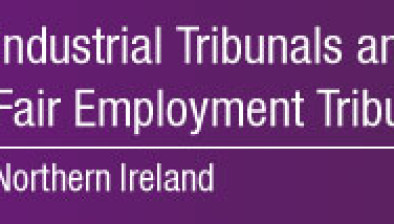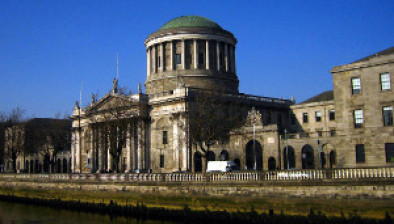NI: UK: Supreme Court rules earlier cases wrong to treat ‘foresight’ as sufficient test for murder

The UK Supreme Court has unanimously ruled in two cases that foresight is simply evidence – albeit sometimes strong evidence – of intent to assist or encourage a crime, which is the proper mental element for establishing secondary liability. In doing so, it has set the law back to its position before Chan Wing-Siu.
The legal issue in these cases concerned the mental element of intent which must be proved when a defendant is accused of being a secondary party to a crime. The question of law was whether the common law took a wrong turn in two cases, Chan Wing-Siu v The Queen 1 AC 168 and Regina v Powell and English 1 AC 1.
The appellant Jogee was convicted at Nottingham Crown Court of the murder of Paul Fyfe. Mr Fyfe was the boyfriend of Naomi Reid and he was stabbed to death in the hallway of her home in the early hours of 10 June 2011 by the appellant’s co-defendant, Mohammed Hirsi. Hirsi pleaded guilty to murder.
The appellant and Hirsi spent the previous evening at various places, taking drink and drugs. They became increasingly intoxicated and increasingly aggressive. Shortly before midnight they arrived at Ms Reid’s house. She told them to leave and that she was expecting Mr Fyfe to return. They said that they were not scared of him and would sort him out. They left but Hirsi returned and was there when Mr Fyfe arrived. Ms Reid called the appellant and told him to fetch Hirsi, which he did, but soon afterwards Hirsi and the appellant came back to her house. Hirsi entered the house and there was an angry confrontation between him and Mr Fyfe. The appellant was outside with a bottle and shouting to Hirsi to do something to Mr Fyfe and at one stage the appellant came to the door and threatened to smash the bottle over Mr Fyfe’s head. The fatal stabbing was done by Hirsi with a knife which he took from the kitchen.
The judge directed the jury that the appellant was guilty of murder if he took part in the attack on Mr Fyfe and realised that it was possible that Hirsi might use the knife with intent to cause serious harm.
The appellant Ruddock was convicted in the Circuit Court at Montego Bay, Jamaica, of the murder of Peter Robinson. The appellant’s co-defendant, Hudson, pleaded guilty to the murder.
Mr Robinson was a taxi driver and the prosecution’s case was that the murder was committed in the course of robbing him of his station wagon. The police evidence was that the appellant made a statement under caution which amounted to an admission that he was involved in committing the robbery and that he was present when Hudson killed the victim by cutting his throat but a denial that the appellant was responsible for the killing. The judge directed the jury that Ruddock was guilty of murder if he took part in the robbery and knew that there was a possibility that Hudson might intend to kill the victim.
In each case the direction to the jury derived from Chan Wing-Siu andReg v Powell and English which were binding on the trial judges.
The Supreme Court has now concluded that Chan Wing-Siu andPowell and English did take a wrong turning and the appeals should therefore be allowed. The correct rule is that foresight is simply evidence (albeit sometimes strong evidence) of intent to assist or encourage, which is the proper mental element for establishing secondary liability.
The court was concerned with a part of the law of secondary liability for crime. It concerns the person who did not himself forge the document, fire the gun or stab the victim (the person who did is called ‘the principal’), but who is said to have encouraged or assisted the principal to do so.
There is no question that persons who are indeed together responsible for a crime are all guilty of it, whether as principals or secondary parties. Sometimes it is not possible to determine exactly whose hand performed the vital act, but this does not matter providing that it is proved the each defendant either did it himself of intentionally assisted or encouraged it.
These cases do not affect that basic rule at all.
Within this part of the criminal law, the court has been concerned with a narrower sub-part. This concerns secondary parties who have been engaged with one or more others in a criminal venture to commit crime A, but in doing so the principal commits a second crime, crime B. In many of the reported cases crime B is murder committed in the course of some other criminal venture, but the rule of law is not confined to cases of homicide, or indeed to cases of violence. The question is: what is the mental element which the law requires of the secondary party?
This narrower area of secondary responsibility has sometimes been labelled “joint enterprise”, but this is to misuse that expression. To speak of a joint enterprise is simply to say that two or more people were engaged in a crime together. That, however, does not identify what mental element must be shown in the secondary party. The particular narrower area of secondary responsibility here in question – where crime B is committed during the course of crime A – has been, in the past, more precisely labelled “parasitic accessory liability”.
The two cases of Chan Wing-Siu and Reg v Powell and English held that in the kind of situation described, the mental element required of the secondary party (D2) is simply that he foresaw the possibility that D1 might commit crime B. If D2 did foresee this, the cases treated his continued participation in crime A not simply as evidence that he intended to assist crime B, but as automatic authorisation of it. So D2 was guilty under this rule, even if he did not intend to assist crime B at all. This set a lower test for D2 than for D1, who will be guilty of crime B only if he has the necessary mental element for that crime, usually intent. And it is in contrast to the usual rule for secondary parties, which is that the mental element is an intention to assist or encourage the principal to commit the crime.
The conclusion of this court is that once the two questioned decisions are fully analysed, it is plain that they did take a wrong turning in their reasoning, even if the outcome might well have been the same if the error had not been made. The prior cases which were relied on were only part of the history and important cases were not discussed. The decisions departed from the well-established rule that the mental element required of a secondary party is an intention to assist or encourage the principal to commit the crime. They also advanced arguments based on the need that co-adventurers in crimes which result in fatality should not escape conviction, without considering whether the secondary parties would generally be guilty of manslaughter in any event.
The law in this field has always been a matter of the common law rather than of statute, and so it is right for the courts, which have created it, to investigate whether a wrong turning was taken.
The court held, in a unanimous judgment, that the law must be set back on the correct footing which stood before Chan Wing-Siu. The mental element for secondary liability is intention to assist or encourage the crime. Sometimes the encouragement or assistance is given to a specific crime, and sometimes to a range of crimes, one of which is committed; either will suffice. Sometimes the encouragement or assistance involves an agreement between the parties, but in other cases it takes the form of more or less spontaneous joining in a criminal enterprise; again, either will suffice.
Intention to assist is not the same as desiring the crime to be committed. On the contrary, the intention to assist may sometimes be conditional, in the sense that the secondary party hopes that the further crime will not be necessary, but if he nevertheless gives his intentional assistance on the basis that it may be committed if the necessity for it arises, he will be guilty. In many cases, the intention to assist will be co-terminous with the intention (perhaps conditional) that crime B be committed, but there may be some where it exists without that latter intention. It will remain relevant to enquire in most cases whether the principal and secondary party shared a common criminal purpose, for often this will demonstrate the secondary party’s intention to assist. The error was to treat foresight of crime B as automatic authorisation of it, whereas the correct rule is that foresight is simply evidence (albeit sometimes strong evidence) of intent to assist or encourage. It is a question for the jury in every case whether the intention to assist or encourage is shown.
This brings the mental element of the secondary party back into broad parity with what is required of the principal. The correction is also consistent with the provision made by Parliament in a closely related field, when it created (by the Serious Crime Act 2007) new offences of intentionally encouraging or assisting the commission of a crime, and provided that a person is not to be taken to have had that intention merely because of foreseeability.
The court makes clear what the present cases do not decide. First, they do not affect the law that a person who joins in a crime which any reasonable person would realise involves a risk of harm, and death results, is guilty at least of manslaughter. Manslaughter cases can vary in their gravity, but may be very serious and the maximum sentence is life imprisonment. Secondly, they do not affect the rule that a person who intentionally encourages or assists the commission of a crime is as guilty as the person who physically commits it. Thirdly, they do not alter the fact that it is open to a jury to infer intentional encouragement or assistance, for example, from weight of numbers in a combined attack, whether more or less spontaneous or planned, or from knowledge that weapons are being carried. It is a commonplace for juries to have to decide what inferences they can properly draw about intention from an accused person’s behaviour and what he knew.
This necessary correction to the wrong turning taken by the law does not mean that every person convicted in the past as a secondary party, where the law as stated in Chan Wing-Siu was applied, will have suffered an unsafe conviction. A correction to the law does not have this effect. The outcome may in many cases have been the same. Those whose convictions are outside the time limit for appealing would require the exceptional leave of the Court of Appeal, Criminal Division, to challenge them out of time. It is for that court to enquire whether substantial injustice would occur in any particular case, but it is not the law that that is shown simply because the rules which then prevailed have now been declared to have contained a flaw. The same rules apply where the Criminal Cases Review Commission is asked to consider referring a case to the Court of Appeal.
In these two cases, the convictions for murder must be set aside because the law was wrongly understood and the appeals were brought in time. In Jogee it was argued on his behalf that he ought not to have been convicted of either murder or manslaughter and that his conviction should simply be quashed. That argument was quite unrealistic. On the evidence and the jury’s verdict he was unquestionably guilty at least of manslaughter, and there was evidence on which the jury could have found him guilty of murder on a proper direction. The court will ask for written submissions from both parties whether there should be a re-trial for murder or whether the conviction for murder should be replaced by a conviction for manslaughter. In the case of Ruddock there were other, unrelated, misdirections. The Board asked for written submissions from both sides, now that the correct position in law has been identified, as to what should be the appropriate disposal.

Commenting on today’s ruling, Belfast solicitor advocate Ciarán Moynagh of McLernon Moynagh Solicitors told Irish Legal News: “Today’s interpretation of the law relating to joint enterprise is significant and will have ramifications across all relevant matters in both the Magistrates and Crown Courts.
“It is right and proper that the Prosecution have the duty and burden to prove beyond a reasonable doubt that an individual committed an unlawful act with either recklessness or the intention to do so. This burden should not be achieved based on the actions of someone and whether the low threshold of forseeability is met. Now the jury will need evidence that the person assisted or encouraged the principal purpose. This will protect the innocent and also secure safe convictions in cases.
“This clarification will hopefully ensure against miscarriages of justice occurring. It now remains to be seen whether those serving sentences upon which they were convicted by way of joint enterprise will seek a review of their sentence and/or conviction.”










